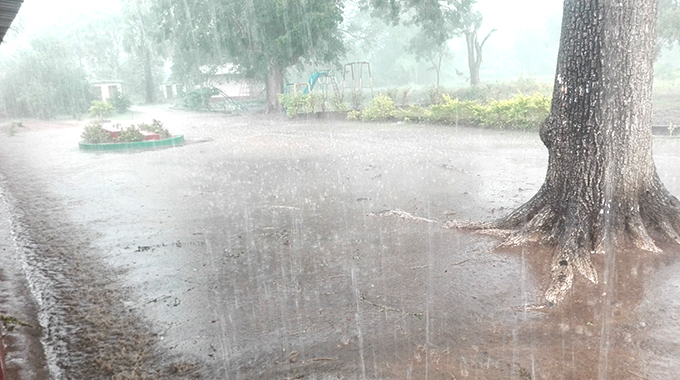
Sifelani Tsiko Agric, Environment & Innovations Editor
Poor rains and drier weather conditions could reduce grain production significantly in the 2019–2020 cropping season, forcing the region to import more than nine million tonnes of grain.
According to the latest Food and Agriculture Organisation Crop Prospects and Food Situation global report, an unfavourable rainfall outlook will diminish 2020 production prospects to below 30,2 million tonnes.
“For the December 2019-March 2020 period, weather forecasts point to a higher probability of below-average rains throughout most of the sub-region, a period that coincides with the critical reproductive phase of the maize crop, a key food staple,” said the report.
“As a result, the overall outlook for maize yields in 2020 is for a continuation of below-average levels. Nonetheless, it should be noted that although seasonal rainfall is forecast to be below normal, crop water requirements may still be satisfied, particularly in northern parts of the sub-region, where average seasonal cumulative rainfall exceeds the water requirements of maize crops.”
Reduced harvests are likely to intensify food insecurity in 2020, increasing the number of people in need of assistance.
Extreme drought that hit the entire region sharply reduced the 2019 harvests, leading to increased food imports for most SADC countries.
Average cereal output for 2019 is estimated at 30,2 million tonnes, about 2,1 million tonnes below the previous five-year average.
The reduction was primarily due to a severe drought — the worst in four decades that resulted in extensive crop losses and caused a reduction in yields and the area harvested.
The largest yearly decreases were expected in Mozambique, South Africa, Zambia and Zimbabwe, with outputs in the latter three countries declining to well below-average levels.
Production of maize in the sub-region is estimated at 22,3 million tonnes, 10 percent below the previous five-year average.
By contrast, the second most produced cereal crop, paddy, increased to an above-average level of 4,5 million tonnes in 2019, largely owing to a production rebound in Madagascar, which produces more than 80 percent of the sub-region’s output.
“The lower harvests have led to steep up-turns in cereal import requirements for most countries, particularly in consideration of the lower-than-average national stocks that curbed countries’ capacities to compensate for the production shortfalls,” the FAO said.
“Total cereal import requirements in the 2019-20 marketing year (generally April/March) are estimated at 9,4 million tonnes, more than 1,5 million tonnes above the previous year and about 0,3 million tonnes higher than the average.
“Larger import needs for maize, estimated at 2,4 million tonnes in 2019-20 for the sub-region as a whole, account for the bulk of this year’s increase and nearly one-third of this volume is expected to be imported by Zimbabwe on account of the country’s substantially reduced harvest.”
South Africa is the region’s biggest grain exporter, but in the 2019–20 cropping season, it is forecast to export a below-average quantity of between 1,2 and 1,5 million tonnes of maize, largely due to the lower harvest in 2019.
Exports from Zambia, which in recent years was an important source of supplies for neighbouring countries, are expected to be minimal, reflecting tight domestic supplies following two years of below-average harvests.
Although planting estimates for the 2020 crop are not yet available for most countries, the prevailing higher year-on-year grain prices could encourage farmers to expand the area sown.
“This factor has already underpinned expectations of an expansion in maize sowings in South Africa, the main cereal-producing country in the sub-region. Preliminary indications point to an area of 2,52 million hectares to maize, which, if it materialises, would place the 2020 planted area 6 percent above the previous five-year average,” according to the latest FAO report.
The region’s cereal deficit has been worsened by a severe drought last season as well as the impact of the Fall Armyworm pest on crop yields.
The number of food-insecure people in the sub-region is likely to rise over the course of 2020, rising to figures above those of 2019 owing to the impact of a harsh drought last season.
During the peak of the lean season (January-March 2020), the number of food insecure people is projected to reach 12,5 million, 15 percent above the figure estimated in the corresponding period in 2019.
“The projected level is also the second highest on record and is principally triggered by the impact of the reduced harvests that sharply cut households’ food supplies and diminished income-generating opportunities, through a decrease in crop sales,” the FAO reported.
“The higher food prices are also exacerbating food insecurity conditions, particularly in Zimbabwe, where households’ access to food has been severely constrained by the continual rise in prices across all food products, which negates the ability to effectively substitute to cheaper food alternatives, a key coping strategy.”
The largest food insecure populations are in Zambia and Zimbabwe, where an estimated 2.3 million and 5.5 million people, respectively, will be in need of urgent assistance.
Food insecurity also deteriorated significantly in Mozambique with 1,65 million people in need of food assistance while the prevalence of food insecurity also increased in Eswatini, Lesotho and Namibia.
In 2019, aggregate cereal production in Africa is estimated at 198,5 million tonnes, 6,5 million tonnes below the previous year’s high level but still well above the five-year average.
In Southern and Eastern Africa, aggregate cereal outputs in 2019 are estimated to have declined by 2.9 million and 2.8 million tonnes, respectively, year on year, on account of extreme weather events, including dry weather conditions in both sub – regions and two cyclones in Southern Africa.
SADC recorded the lowest rainfall in nearly four decades in the 2018-2019 cropping season leading to increased food insecurity and water shortages in the region.
The drought also affected water supplies for domestic, industrial and agricultural — irrigation and livestock — usage.
It has led to reduced power out from Lake Kariba hydro power station, forcing Zimbabwe and Zambia to ration power.
